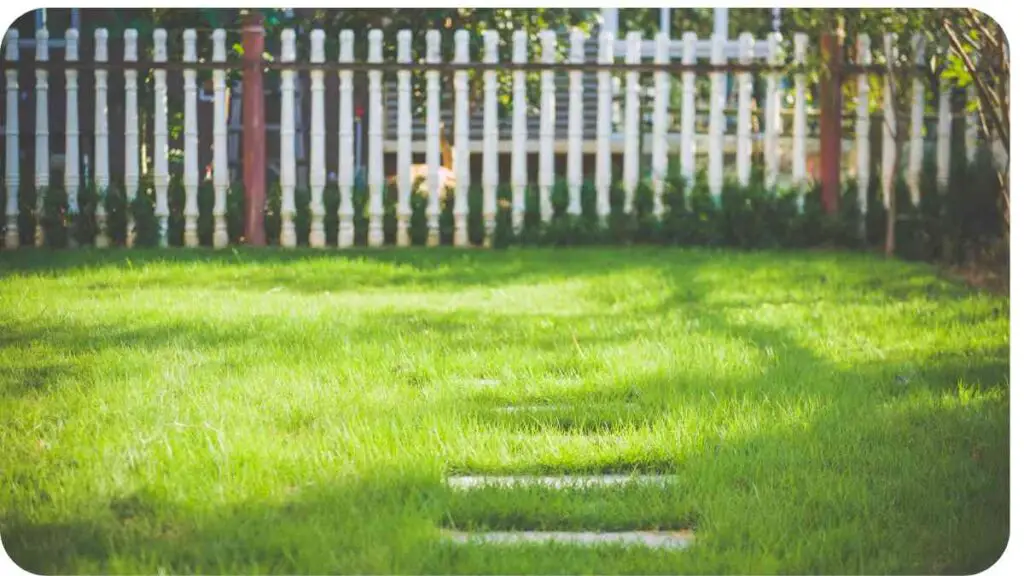Have you ever wondered how much sunlight your front yard gets? Understanding sunlight exposure in your front yard is crucial for planning your garden, choosing the right plants, and ensuring their healthy growth. In this guide, we’ll explore how you can assess sunlight levels in your front yard effectively and optimize your gardening efforts.
| Takeaway |
|---|
| Understanding sunlight exposure in your front yard is crucial for successful gardening. |
| Divide your yard into sunlight zones: full sun, partial sun, partial shade, and full shade. |
| Choose plants that match the sunlight conditions in each area of your yard for optimal growth. |
| Regularly monitor sunlight patterns and adjust your gardening strategies as needed. |
| Implement simple tips to maximize sunlight exposure, such as pruning trees, using reflective surfaces, and strategic plant placement. |
2. Understanding Sunlight in Your Front Yard

Sunlight is essential for plants as it fuels photosynthesis, the process through which plants convert light into energy. Different areas of your front yard may receive varying amounts of sunlight throughout the day due to factors like shade from trees, buildings, or other structures.
Designing a beautiful front yard on a slope can be a challenge, but this handy guide can help you create a stunning outdoor space.
3. Importance of Sunlight for Plants
Plants have varying sunlight requirements. While some thrive in full sun, others prefer partial shade or full shade conditions. Understanding the sunlight needs of your plants is vital for their overall health and growth.
Table: Sunlight Requirements of Common Plants
| Plant | Sunlight Requirement |
|---|---|
| Roses | Full Sun |
| Hostas | Partial to Full Shade |
| Tomatoes | Full Sun |
| Impatiens | Partial to Full Shade |
| Lavender | Full Sun |
4. Assessing Sunlight Levels
To determine how much sun your front yard gets, you need to assess sunlight levels accurately. Here are some key factors to consider:
Sunlight Zones in Your Front Yard
Your front yard can be divided into different sunlight zones based on the amount of sunlight they receive:
Maximize your front yard’s potential with these outdoor enjoyment ideas and transform it into a functional and beautiful space.
Table: Sunlight Zones in Your Front Yard
| Sunlight Zone | Description |
|---|---|
| Full Sun | Receives direct sunlight for 6 or more hours/day |
| Partial Sun | Gets 4-6 hours of sunlight/day |
| Partial Shade | Receives 2-4 hours of sunlight/day |
| Full Shade | Gets less than 2 hours of direct sunlight/day |
Understanding these zones will help you select suitable plants for each area.
Tools for Sunlight Measurement
Various tools can help you measure sunlight levels accurately:
Table: Tools for Sunlight Measurement
| Tool | Description |
|---|---|
| Sunlight Meter | Measures sunlight intensity in a specific area |
| Smartphone Apps | Apps that use your phone’s sensors to measure sunlight exposure |
| DIY Methods | Homemade tools like a sun chart or shadow tracker |
5. Factors Affecting Sunlight Exposure

Several factors can influence sunlight exposure in your front yard. Understanding these factors will help you interpret sunlight levels accurately:
Trees and Shade
Trees provide shade, which can significantly affect sunlight levels in your front yard. Tall trees can cast large shadows, creating areas of partial or full shade beneath them.
Discover the benefits of xeriscaping and learn how to create a water-efficient landscape for your front yard with this ultimate guide.
Buildings and Structures
Buildings, fences, and other structures can also create shade and affect sunlight exposure. Depending on their height and orientation, they may cast shadows at different times of the day.
Seasonal Changes
Sunlight patterns vary throughout the year due to seasonal changes in the sun’s position. Areas that receive full sun in summer may be shaded during winter months due to lower sun angles.
6. Steps to Measure Sunlight in Your Front Yard
Now that you understand the factors affecting sunlight exposure, let’s discuss how to measure sunlight levels in your front yard accurately.
Build a front yard full of beautiful flower beds with these expert tips and enjoy the beauty of nature right outside your door.
Using Sunlight Apps
Several smartphone apps can help you measure sunlight exposure. These apps use your phone’s sensors to provide real-time data on sunlight intensity.
DIY Sunlight Measurement
You can also create simple DIY tools to measure sunlight:
- Sun Chart: Create a chart to track sunlight patterns in your front yard throughout the day.
- Shadow Tracker: Place a stick in the ground and mark its shadow at different times to understand sunlight patterns.
These methods may not be as precise as sunlight meters but can still provide valuable insights.
7. Interpreting Sunlight Data
Once you’ve gathered sunlight data, it’s essential to interpret it correctly to make informed decisions about your garden. Here’s how to understand sunlight data effectively:
Ideal Sunlight Conditions for Plants
Different plants have different sunlight requirements. Here’s a general guide:
Table: Ideal Sunlight Conditions for Common Plants
| Plant | Ideal Sunlight Exposure |
|---|---|
| Roses | Full Sun |
| Hostas | Partial to Full Shade |
| Tomatoes | Full Sun |
| Impatiens | Partial to Full Shade |
| Lavender | Full Sun |
Matching plant needs with sunlight zones in your yard ensures optimal growth.
Adapting Garden Design to Sunlight Levels
Once you know your yard’s sunlight patterns, you can plan your garden accordingly:
- Full Sun Areas: Plant sun-loving species like roses, tomatoes, or lavender.
- Partial Shade Areas: Opt for plants like hostas or impatiens that thrive in partial shade.
- Full Shade Areas: Choose plants that tolerate low light conditions.
8. Tips for Maximizing Sunlight in Your Front Yard

Here are some tips to maximize sunlight exposure in your front yard:
- Prune Trees and Shrubs: Trim overhanging branches to allow more sunlight to reach the ground.
- Choose Reflective Surfaces: Light-colored surfaces like white fences or walls can reflect sunlight into shaded areas.
- Use Raised Beds or Containers: Place plants in raised beds or containers that can be moved to capture more sunlight.
- Optimize Plant Placement: Position tall plants where they won’t cast shade on sun-loving ones.
- Install Mirrors: Strategically placing mirrors can help redirect sunlight into shaded areas, increasing overall light exposure.
- Consider Vertical Gardening: Vertical gardening allows plants to receive more sunlight by utilizing vertical space.
- Regular Maintenance: Keep your front yard tidy by removing debris and clutter that may block sunlight.
- Monitor and Adjust: Regularly monitor sunlight patterns in your yard throughout the year and adjust plant placement as needed.
By implementing these tips, you can make the most of the sunlight available in your front yard and create a thriving garden.
Mosquitoes in the front yard can be a nuisance, but with these helpful tips, you can get rid of them and enjoy your outdoor space.
9. Conclusion
Understanding how much sun your front yard gets is vital for successful gardening. By assessing sunlight levels accurately and choosing the right plants for each area, you can create a beautiful and healthy garden that flourishes throughout the seasons.
Remember to regularly monitor sunlight patterns and adjust your gardening strategies accordingly to ensure optimal growth for your plants.
Further Reading
- Determine Sun Exposure: Learn more about determining sun exposure in your yard with this comprehensive guide.
- Guide to Mapping Garden Sun Exposure: Discover tips and techniques for mapping sun exposure in your garden effectively.
- How to Sun Map Your Yard: This article provides step-by-step instructions for sun mapping your yard to optimize plant placement.
FAQs
How do I determine the sunlight exposure in my front yard?
To determine sunlight exposure, observe your yard throughout the day and note areas that receive direct sunlight, partial shade, or full shade. You can also use sunlight measurement tools or smartphone apps for accurate assessment.
What tools can I use to measure sunlight exposure?
You can use sunlight meters, smartphone apps, or DIY methods like sun charts or shadow trackers to measure sunlight exposure in your front yard.
How can I optimize sunlight exposure for my plants?
To optimize sunlight exposure, choose plants that match the sunlight conditions in different areas of your yard. Prune trees and shrubs to allow more sunlight to reach the ground, and consider reflective surfaces or mirrors to redirect sunlight into shaded areas.
What are the ideal sunlight conditions for common plants?
Plants like roses, tomatoes, and lavender prefer full sun, while others like hostas and impatiens thrive in partial shade. Understanding the sunlight requirements of your plants is essential for their healthy growth.
How often should I monitor sunlight patterns in my front yard?
It’s advisable to monitor sunlight patterns throughout the year, as they may change with seasonal variations. Regular monitoring allows you to make necessary adjustments to optimize sunlight exposure for your plants.

Hi! My name is Hellen James, and I’m here to help you with your home-maintenance needs. Whether it’s building a better yard or just trying to fix a garden—I can show you how.

